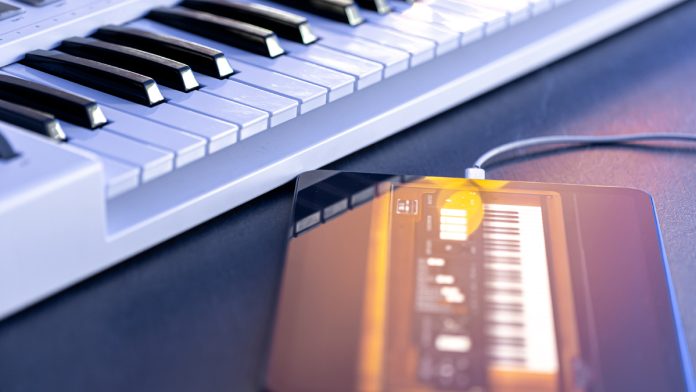Emerging at the intersection of art and innovation, the Portable Touch Instrument is revolutionizing performance in the Smart Musical Instruments industry. Combining intuitive control with advanced design, its engineering harnesses precision sensors and dynamic connectivity for expressive musical creation. Inspired by the Electronics and Technology Behind Portable Touch Instrument, its design integrates state-of-the-art elements to provide seamless interactivity, rich sound synthesis, and an immersive tactile experience. This fusion of aesthetics and engineering is setting new standards for live performance and creative expression.
| Table of Contents | |
|---|---|
| I. | Capacitive Touch Sensing & Multi-Touch Detection |
| II. | High-Performance Microcontrollers & Digital Signal Processors (DSPs) |
| III. | Sensor Fusion & Integrated Multi-Sensor Architectures |
| IV. | Advanced Signal Conditioning & Noise Filtering |
| V. | Embedded Firmware & Real-Time Operating Systems (RTOS) |
| VI. | Wireless Connectivity Protocols |
| VII. | Audio Signal Processing & Synthesis Modules |
| VIII. | Haptic Feedback Integration |
| IX. | Power Management & Energy-Efficient Circuitry |
| X. | High-Speed Data Communication & Synchronization |
| XI. | Modular & Scalable Hardware Architecture |
Capacitive Touch Sensing & Multi-Touch Detection
Capacitive touch sensing offers high precision and enables multi-touch detection, empowering musicians to employ varied gestures for complex control. In the Portable Touch Instrument, this technology detects subtle finger movements and hand placements to dynamically modulate sound and performance parameters. By supporting simultaneous touches, it enhances versatility and expressiveness, ensuring that every nuanced gesture translates into a rich, interactive musical experience.
High-Performance Microcontrollers & Digital Signal Processors (DSPs)
High-performance microcontrollers and DSPs serve as the computational core of the Portable Touch Instrument. Their rapid processing capabilities ensure real-time audio rendering and precise control. This robust hardware infrastructure exemplifies the Electronics Behind Portable Touch Instrument, enabling seamless integration of sensor data and sophisticated signal processing for expressive sound synthesis.
Sensor Fusion & Integrated Multi-Sensor Architectures
Sensor fusion technology integrates multiple inputs—such as accelerometers, gyroscopes, and pressure sensors—into a unified performance stream. Within the Portable Touch Instrument, this integration refines gesture recognition and sound modulation accuracy, enhancing responsiveness and depth in musical expression. The multi-sensor architecture supports a harmonious interplay between physical movement and digital sound creation.
Advanced Signal Conditioning & Noise Filtering
Advanced signal conditioning and noise filtering are pivotal for maintaining clarity in both audio and sensor data. In the Portable Touch Instrument, sophisticated circuitry and algorithms reduce unwanted interference, ensuring that every note and modulation is delivered with precision. This refined processing reinforces the instrument’s reliability and performance quality in live settings.
Embedded Firmware & Real-Time Operating Systems (RTOS)
Embedded firmware paired with real-time operating systems orchestrates seamless operations in the Portable Touch Instrument. These systems coordinate sensor input, audio processing, and user interface actions with minimal latency. The integrated RTOS guarantees stable performance during complex sequences, empowering musicians to express creativity without interruption or delay.
Wireless Connectivity Protocols
Wireless connectivity protocols enable effortless integration of the Portable Touch Instrument into networked performance environments. Leveraging standards such as Bluetooth and Wi-Fi, the device seamlessly communicates with other instruments and controllers. This robust integration advances the Technology Behind Portable Touch Instrument, fostering collaborative creativity and flexible performance setups.
Audio Signal Processing & Synthesis Modules
Audio signal processing and synthesis modules transform digital inputs into rich, vibrant soundscapes. In the Portable Touch Instrument, these modules craft intricate tonal profiles and adaptive timbres, essential for immersive musical performance. By combining advanced digital algorithms with classic sound synthesis, the system demonstrates the Technology Behind Portable Touch Instrument, ensuring dynamic and expressive audio output.
Haptic Feedback Integration
Haptic feedback integration provides tactile responses to user input in the Portable Touch Instrument. Through subtle vibrations and physical cues, the system offers immediate feedback that mimics traditional instrument responses. This sensory layer bridges the gap between digital command and physical expression, enhancing the musician’s control and reinforcing the instrument’s interactive appeal.
Power Management & Energy-Efficient Circuitry
Efficient power management and energy-efficient circuitry are crucial for extended use of the Portable Touch Instrument. Intelligent algorithms optimize battery performance while maintaining high output levels. This approach underscores the value of the Electronics Behind Portable Touch Instrument, ensuring that the device remains reliable, sustainable, and ready to perform under continuous and demanding live conditions.
High-Speed Data Communication & Synchronization
High-speed data communication ensures rapid synchronization across the Portable Touch Instrument’s components. Fast, reliable data exchange minimizes latency, allowing real-time transmission of sensor inputs and audio commands. This seamless connectivity is essential for maintaining precise control and timing, ensuring that every performance nuance is faithfully reproduced during live sessions.
Modular & Scalable Hardware Architecture
A modular and scalable hardware architecture underpins the evolution of the Portable Touch Instrument. Designed for adaptability, it facilitates easy upgrades and the integration of new functionalities without a complete system overhaul. This forward-thinking design framework ensures longevity and continuous innovation within the Smart Musical Instruments industry, meeting diverse artistic needs and technological advancements.

